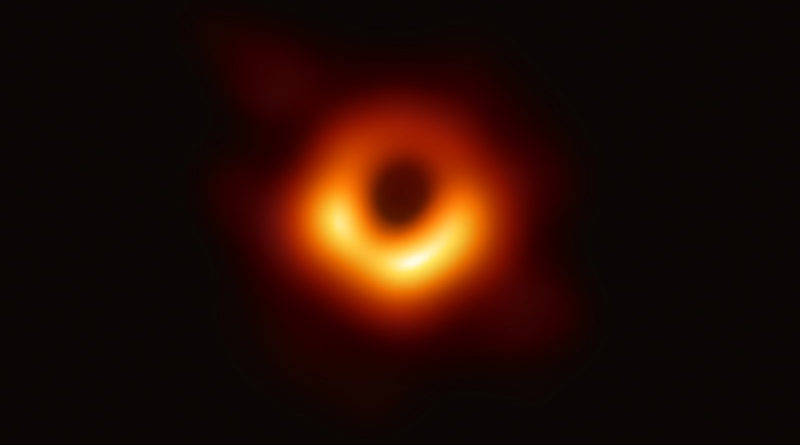What Did Scientists Learn From First Black Hole Photo?
For a very long time, we’ve had confidence that black holes exist. Scientists recently used a global network of telescopes to prove it, capturing the image of a supermassive black hole and its shadow at the center of the galaxy Messier 87, some 55 million light-years away.
(ABOVE: The black hole that was captured in a first-ever picture has a moniker was named “Powehi,” which means “establishing dark source of unending creation.” The moniker comes from an 18th-century chant describing the creation of the Hawaiian universe. Courtesy photo)

SMU physicist Joel Meyers said up until now there’d been a lot of indirect proof that backed up the idea that black holes existed – like how the stars near the region interact with the gravitational pull and the gas emissions that come from the material that falls into them.
But, the fuzzy image that looks like a ring of fire, “is the most direct visualization – it’s a really dramatic step forward in our ability to say here is a black hole and it cast a shadow.”
Researchers at the Event Horizon Telescope project said they were able to create the image of a black hole by using a network of eight radio telescopes, arrayed around the world from Antarctica to Arizona. All previous pictures of black holes were either simulations or animations.
Meyers, who is not associated with EHT, said the most important takeaway from the image is that it allows scientists to test their understanding of how gravity works.
“The fact that the image is so close to what we predicted was really a striking confirmation that scientists know what they are doing.” -Joel Meyers
The image, he said, aligns with expectations of what a black hole should look like based on Albert Einstein’s general theory of relativity, which predicts how space-time is warped by the extreme mass of a black hole.
“We have a lot of evidence that the theory of gravity works really well in our solar system, but this new image provides a direct test of our theory of gravity in the extreme environment around a supermassive black hole,” he said.
This new research might change that.
Supermassive black holes like the one photographed anchor the centers of nearly all galaxies and can be billions of times the mass of the sun. Yet, nobody knows how they formed or got so heavy.
Black holes are also nearly impossible to see. However, some black holes, especially supermassive ones, stand out due to the bright disks of gas and other material that form around them.
What we actually see in the photograph is a bunch of hot gas spiraling into the black hole – kind of like water that circles around the drain in a bathtub – and the friction is causing the gas to heat up and emit radiation like radio waves.
After more data analysis, Meyers said the team of scientists might be able to solve some long-standing mysteries about how the disks of swirling gas and matter operate and how they spew these plumes of materials thousands of light-years into space.
“The fact that the image is so close to what we predicted was really a striking confirmation that scientists know what they are doing,” he said.









